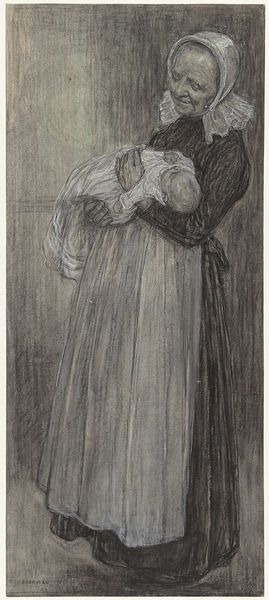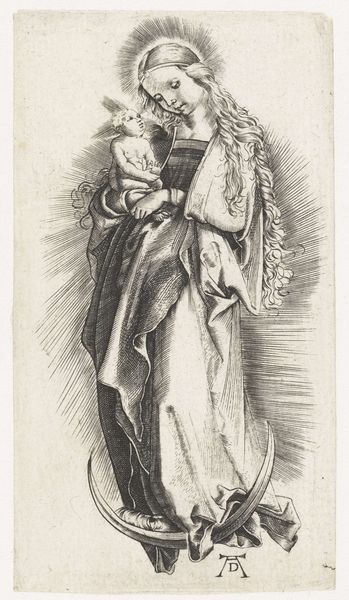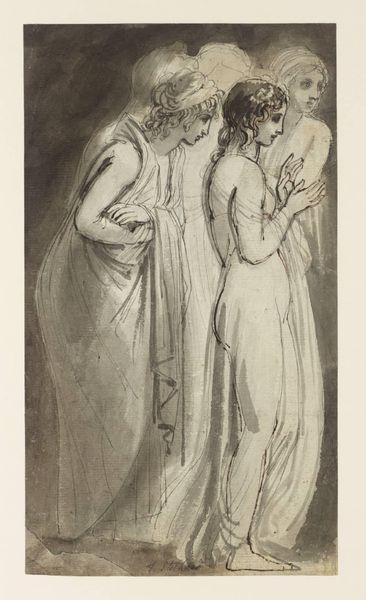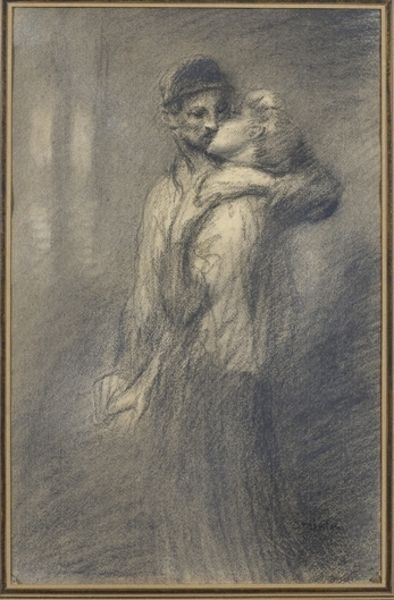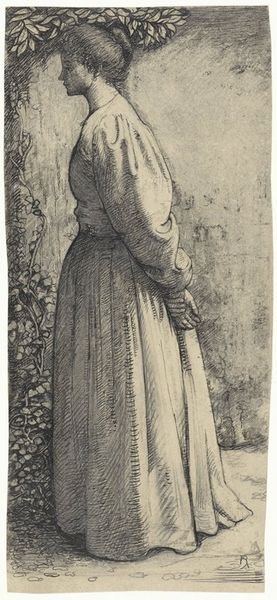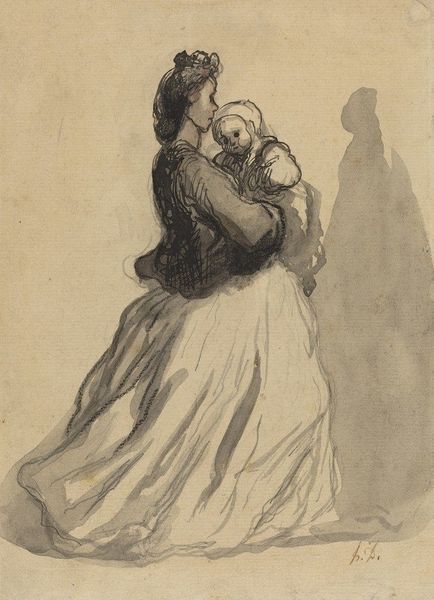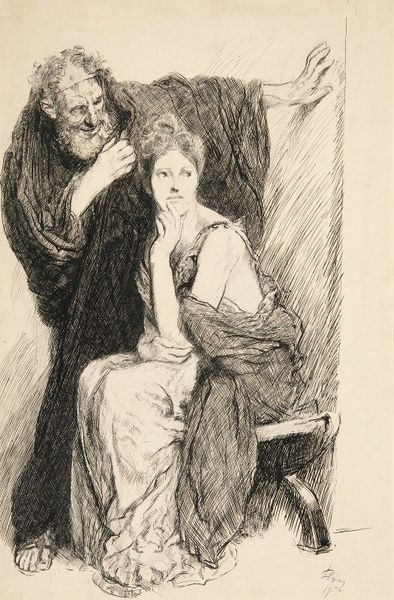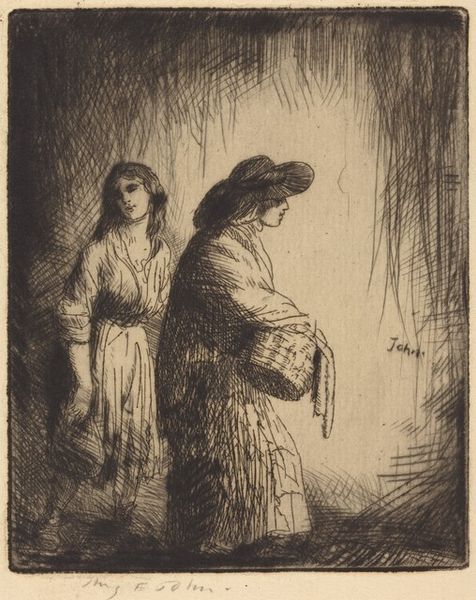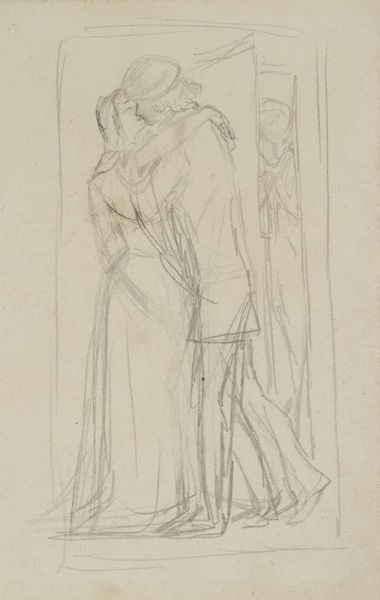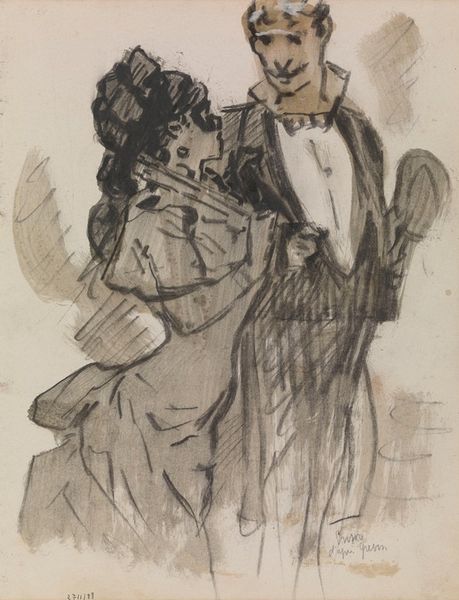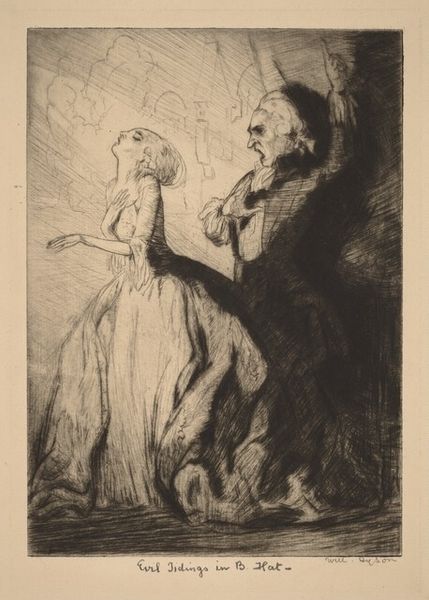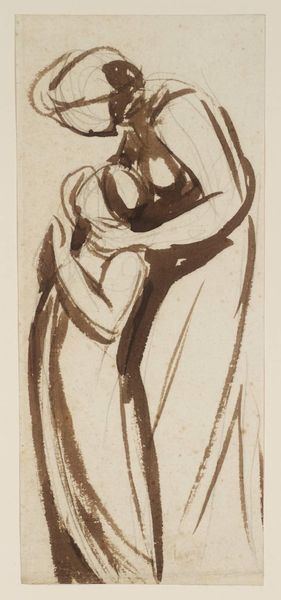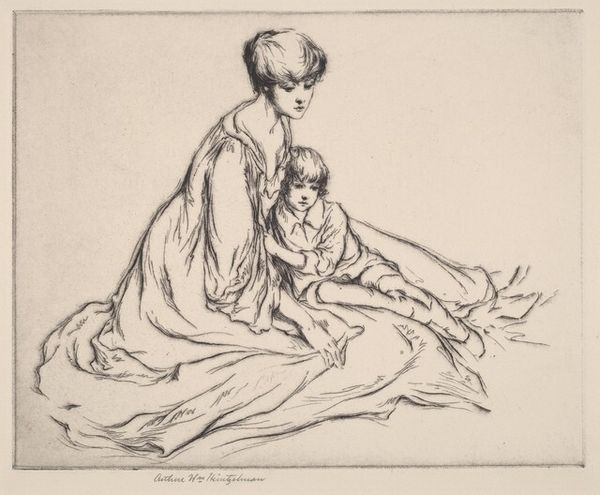
drawing, charcoal
#
portrait
#
drawing
#
figuration
#
portrait drawing
#
charcoal
#
academic-art
Copyright: Public Domain: Artvee
Editor: Carolus-Duran's "Light and Shadow," created in 1874, is rendered in charcoal, it seems like, capturing two figures in what appears to be a moment of contemplation or supplication. There’s something weighty and somber in the scene created by the dramatic contrast of light and dark. What do you make of it? Curator: Considering the materiality of charcoal, its mass production coinciding with industrial expansion, does the apparent reverence depicted resonate differently? Note the grey paper too – inexpensive, mass-produced, decidedly not fine art in itself. Editor: I hadn't considered the significance of the paper itself. So, is it relevant that he chose readily available material for an artwork which potentially has strong religious undertones? Curator: Precisely. Is Duran engaging in a critical commentary? Note also the medium itself, charcoal; a residue of burning, easily erased and reworked. What does its ephemerality say in relation to presumed permanence? Editor: So, by using this medium, is Carolus-Duran grounding it in his contemporary environment? Or is he potentially trying to diminish this potentially sublime moment through such grounding. Curator: Exactly! Consider the academic setting in which Duran worked – does using accessible materials disrupt hierarchies and blur lines between sketches and finished works, especially regarding faith, and how such are represented? Editor: So we're seeing not just a religious moment portrayed but also a comment on the artistic process itself and the socioeconomic factors influencing it. I am looking at this with entirely new eyes now. Curator: Indeed! Examining art through its material components brings forward nuanced dialogues, wouldn't you agree?
Comments
No comments
Be the first to comment and join the conversation on the ultimate creative platform.
